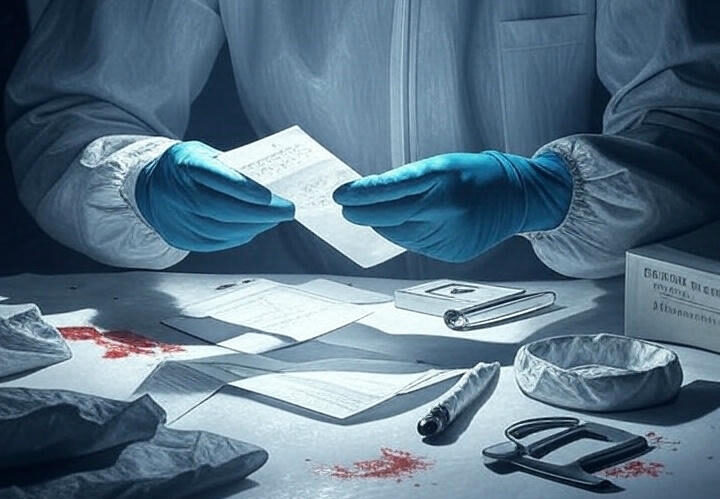Introduction to Crime Scene Technology
Crime scene technology has revolutionized forensic investigations, enabling law enforcement and forensic experts to gather, analyze, and preserve evidence with unprecedented accuracy. From digital forensics to advanced fingerprinting systems, modern tools help solve cases faster and more efficiently.
This guide explores the most impactful crime scene investigation technologies, best practices for evidence collection, and troubleshooting common challenges. Whether you’re a seasoned forensic expert or a newcomer to the field, these insights will enhance your investigative workflow.
Essential Crime Scene Technology Tools
1. Digital Imaging and 3D Scanning
High-resolution cameras and 3D laser scanners capture crime scenes in meticulous detail, allowing investigators to recreate scenarios virtually.
Key Technologies:
-
Laser Scanners (LiDAR) – Create precise 3D models of crime scenes.
-
360-Degree Cameras – Document every angle for later review.
-
Photogrammetry Software – Stitch photos into 3D reconstructions.
Best Practices:
-
Use tripods to avoid blurry images.
-
Capture multiple lighting conditions for clarity.
-
Store files in secure, unalterable formats.
2. Forensic Light Sources (ALS)
Alternate Light Sources (ALS) reveal hidden evidence like bodily fluids, fingerprints, and trace fibers.
Common Wavelengths & Uses:
-
UV (365nm) – Detects semen and certain drugs.
-
Blue (450nm) – Reveals fingerprints and bruises.
-
Green (515nm)** – Highlights bloodstains.
Troubleshooting Tips:
-
If evidence isn’t fluorescing, adjust the wavelength.
-
Avoid ambient light interference by working in darkness.
3. Rapid DNA Analysis
Portable DNA analyzers provide on-site genetic profiling in under two hours, speeding up suspect identification.
Implementation Steps:
-
Collect biological samples (saliva, blood, hair).
-
Insert into the DNA analyzer.
-
Cross-reference with databases for matches.
Common Issues & Fixes:
-
Low DNA Yield? Use a more sensitive collection swab.
-
Contamination? Sterilize tools between samples.
Advanced Crime Scene Investigation Techniques
1. Bloodstain Pattern Analysis (BPA) Software
BPA tools simulate blood spatter trajectories to determine weapon type, attack angle, and sequence of events.
How to Use:
-
Input spatter dimensions and locations.
-
Let the software model possible scenarios.
-
Compare with witness statements for consistency.
Troubleshooting:
-
Inconsistent results? Re-measure spatter diameters.
2. Drones for Aerial Crime Scene Mapping
Drones provide overhead views of large or hazardous scenes, improving documentation efficiency.
Best Practices:
-
Obtain FAA clearance (if required).
-
Use thermal imaging for nighttime searches.
-
Maintain chain of custody for drone-captured data.
3. Automated Fingerprint Identification Systems (AFIS)
AFIS databases match fingerprints against millions of records in seconds.
Optimizing AFIS Searches:
-
Ensure high-quality prints (no smudges).
-
Use multi-biometric searches (fingerprints + facial recognition).
Step-by-Step Crime Scene Processing Protocol
Step 1: Secure the Scene
-
Establish a perimeter with crime scene tape.
-
Log all personnel entering/exiting.
Step 2: Document Evidence
-
Photograph and sketch the scene before touching anything.
-
Tag each piece of evidence with unique IDs.
Step 3: Collect & Preserve Samples
-
Wear gloves to prevent contamination.
-
Use sterile containers for biological evidence.
Step 4: Analyze Evidence in the Lab
-
Process fingerprints, DNA, and digital data.
-
Cross-reference findings with case details.
Step 5: Reconstruct the Crime Scene
-
Use 3D modeling to visualize events.
-
Present findings in court if needed.
Troubleshooting Common Crime Scene Tech Issues
| Problem | Possible Cause | Solution |
|---|---|---|
| Blurry crime scene photos | Camera shake or low light | Use a tripod and external flash |
| DNA degradation | Improper storage | Refrigerate samples immediately |
| Fingerprint smudging | Oily surfaces | Apply fingerprint powder gently |
| Software crashes | Outdated system | Update forensic software regularly |
Future Trends in Crime Scene Technology
-
AI-Powered Forensics – Machine learning speeds up evidence analysis.
-
Blockchain for Evidence Integrity – Immutable logs prevent tampering.
-
Nanotechnology Sensors – Detect trace evidence invisible to the naked eye.
Conclusion
Crime scene technology continues to evolve, offering forensic professionals faster, more accurate ways to solve cases. By leveraging digital imaging, DNA analysis, and AI-driven tools, investigators can uncover critical evidence with greater efficiency.
Stay updated with emerging trends, refine your protocols, and always prioritize contamination-free evidence collection. With the right technology and techniques, justice is just a clue away.
Final Tip: Regularly attend forensic tech workshops to stay ahead of advancements in crime scene investigation tools.
Website: VinesNest





